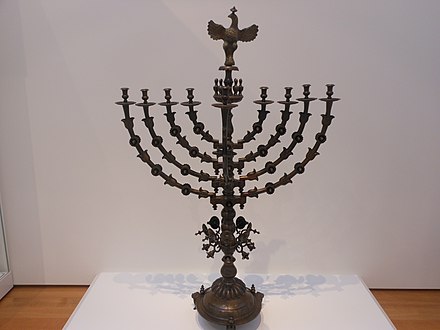The mission of the North Carolina Museum of Art (NCMA) is to collect, steward, and exhibit the People’s Collection, the state art collection that belongs to the citizens of North Carolina, and inspire creativity by connecting our diverse communities to cultural and natural resources. The museum’s collection was established in 1947 when the State Legislature appropriated $1 million to purchase art for a state-owned collection, the first of its kind. The collection has since grown to over 4,000 works of art and expanded its scope to include ancient and classical art, the arts of Africa and Mesoamerica, Jewish ceremonial art, and works created in the latter 20th and 21st centuries. The NCMA sits on a 164-acre campus in Raleigh, North Carolina, with galleries ni the East and West Buildings displaying art spanning 5,000 years, and the Museum Park featuring dozens of temporary and site-specific works of art along miles of nature trails. All are free to visit. Together, the campus assets form a dynamic platform for presenting the museum’s collection, programming, and events-and attract more than one million visitors of all ages each year. NCMA audiences mirror the diverse makeup of North Carolina with 40% minority visitors. In FY23, the museum’s total annual operating budget was $23,972,535 million with 43% percent appropriated by the State of North Carolina and the remainder provided by the NCMA Foundation, a separate 501(c)(3).
North Carolina Museum of Art Foundation, Inc.
Street Address: 2110 Blue Ridge Road, Raleigh, NC 27607 Mailing Address: 4630 Mail Service Center, Raleigh, NC 27699 Employer Identification Number: 23-7071511
2023 Judaic ArtGallery Funding
The NCMA is grateful to the Puffin Foundation West, Ltd. for its generous grants totaling $105,000 to support the Judaic Art Gallery in 2023. The CMA has been a national leader in the presentation of Jewish ceremonial art since 1983, when ti opened the first permanent gallery devoted to Judaica ni an American art museum. Over four decades, the museum has amassed one of the finest collections of Judaic art in the country, spanning four centuries and representing Jewish communities across four continents. The NCMA remains one of only two fine arts museums in America with a permanent gallery dedicated to Jewish ceremonial art.
In October 2022, the Judaic Art Gallery was relocated to a more prominent location close to the entrance of the NCMA’s West Building. The new location brings our Judaic masterpieces in closer dialogue with global artistic and spiritual traditions, supporting our intention to bring diverse narratives to light as we explore the human experience across space and time. In July 2023, the museum hired the first full-time Curator of Judaic Art, Dr. Sean Burrus. In this newly created role, Dr. Burrus is responsible for creating a vision for and launching the only Center for Judaic Art in the United States.
2023 funding from the Puffin Foundation West, Ltd. supported the Judaic Art Gallery upgrades to enhance visitor engagement with the collection and supported Jewish ceremonial art programming. This grant also supported D. Burrus in 2023 by providing resources necessary to begin developing the future Center for Judaic Art.
Summative Evaluation
The Museum Evaluator recently completed a comprehensive evaluation of the newly installed galleries with a team of undergraduate interns. To evaluate the success of the reinstallation project and utilize learnings to inform future decision-making, the NCMA conducted a robust evaluation plan in three phases:
1) Process Evaluation: The initial phase was dedicated to understanding the intricacies of the reinstallation process. Curator interviews helped articulate specific project goals and outcomes, while pre- and post- reinstallation gallery audits documented the extent of major content shifts. This phase culminated with the creation of a change model diagram, providing a holistic overview of the changes brought about by the reinstallation.
This logic model (pictured below) describes physical changes, content changes, educational outputs, and visitor outcomes.
Movement of G a l l e r i e s
Cross-Temporal Connections
Thematic Galleries (TG)
Cross-Cultural Connections
Bringing in New Art
Emphasis on NC Artists
Including Outside V o i c e s
Exploring the Museum’s Role in telling Histories
Disrupting the Western Cannon
Emphasizing the Human Experience
Visitors will see themselves represented throughout the NCMA
Visitors will have an enjoyable experience with the NCMA.
Visitors will feel a sense of welcome and belonging.
Physical Changes
Interpretation Galleries ( I G )
Content Changes Narrative Shifts
Outputs Expanding the Definition of Art
Outcomes
Visitors will make deeper
Visitors will discover more connections with art,
about the world around nature, and people.
them through art.
2) Impact Evaluation: This phase gauged the impact of the reinstallation on museum visitors. A combination of qualitative and quantitative methods, including gallery audits, survey responses, gallery interviews, feedback, and in-gallery feedback touch panels, were used to collect visitor feedback before and after the reinstallation. A spectrum of visitor responses was revealed, with a noteworthy trend of heightened satisfaction among the majority.
Touch survey kiosks measured visitor satisfaction in the galleries to deliver location-specific Net Promoter Scores, the gold standard customer experience metric in the field of market research. The benchmark score for art museums is 65, and any score at or above 50 indicates satisfaction. The new Judaic Art Gallery received the second-highest NPS score in the Museum at 60%, a testament to the collection and to the decision to relocate the gallery to a new, more central location.
Additional analysis of audience research found that 81% of visitors are satisfied with the Judaic Art Gallery experience post-reinstallation, well above the American Alliance of Museum’s baseline of 60% of museum visitors who are satisfied with inclusive content. These statistics demonstrate the positive impact of the reinstallation on the visitor experience, and underscore the importance of dynamic, responsive approaches to museum curation.
Reinstallation Change Model
3) Summative Evaluation: The final phase involved the triangulation of data collected in the previous phases, reinforced by direct visitor observations and interviews. The consolidated findings affirmed the overall success of the reinstallation in achieving desired visitor outcomes.
For the Judaic Art Gallery specifically, the evaluation team applied flow theory to assess the impact of relocating the gallery space. Flow theory suggests that by creating an effortless flow of visitor traffic through the galleries, the museum guests will have a heightened experience in which they are able to more fully immerse themselves in viewing and contemplating art. Analysis of traffic pre- and post-installation indicates that the Judaic Art Gallery has been successful in achieving an improved visitor experience.
The physical location of the Judaic Gallery was moved from a lower-traffic location (A) to a higher-traffic location (B). Analysis from a heat map produced by the TruTrade market research platform indicates that visitor flow did not change pre-to-post. Thus, moving the gallery to location B resulted in having more visitors to the Judaic Gallery post-Reinstallation.
Finally, the evaluation team reviewed trends in the data and shared their findings with the curatorial team. By employing data-driven decision-making with an eye towards continuous improvement, the NCMA positions itself as a model for museums seeking to engage with and adapt to the changing needs and expectations of visitors.
While responses to the Judaic Art Gallery were overwhelmingly positive, surveys indicate that visitors are requesting additional kiosks and wal labels. The digital kiosks are a popular stopping point for visitors in the gallery, but the touchscreens can only be used by one person at a time. Some labels are not adjacent to the object of interest.
This feedback is incredibly valuable as we plan the next stage of development for the Judaic Art Gallery. D.r Burrus is working actively with our evaluation and exhibition design teams to review audience research data, solicit additional feedback, and fine tune our installation. Based on data already collected, the team is preparing for further improvements in 2024 including enhanced print labelling and digital didactics.
Thank you for your supportoftheJudaicArt Gallery!
2023 To Take Shape and Meaning Grant Final Report
Prepared for the Puffin Foundation West, Ltd.
Convergence, Defenders Descend from Portal to Pueblo, 2023, by Virgil Ortiz
Gift of Anonymous, Alan and Benjamin King. Jeffrey Childers and Onay Cruz Gutierrez, Joyce Fitzpatrick and Jay Stewart, Valerie Hillings and B.J. Scheessele: Marjorie Hodges and Carlton Midyette, Stefanie and Douglas Kahn, Bonnie and John Medinger, Mindy and Guy Solie. Cathy and Jmi Stuart, Libby and Lee Buck, Liza and Lee Roberts.
2023 To Take Shape and Meaning Grant Final Report
Prepared for the Puffin Foundation West, Ltd.
2023 To Take Shape and Meaning
Contemporary American Indian Art Funding
The NCMA is grateful to the Puffin Foundation West, Ltd. for its generous grant of $15,000 to support contemporary American Indian art at the NCMA. The To Take Shape and Meaning exhibition brings together a wide range of Indigenous world views, ideas, experiences, traditions, cultures, media, and continuities of Native arts-collective and individual expressions of Native America. The exhibition is a celebration of all these things: the brilliance, mastery, knowledge, and significance of American Indian peoples. Through the work of renowned artists, ti provides audiences with an unprecedented opportunity to gain a nuanced and expansive understanding of contemporary Native three-dimensional art. This project reinforces our commitment to highlighting contemporary artists as well as diverse histories, voices, and perspectives, including those of North Carolina artists. The exhibition also helps us to meet an important pillar in our strategic plan: to generate exhibitions from our collection and develop partnerships with institutions across the state. To Take Shape and Meaning provides opportunities for robust public programming centered on the themes of the exhibition, with the intent of inviting multiple viewpoints and encouraging community dialogue. The NCMA expects the exhibition to serve over 85,000 people. The museum serves over one million people a year. We steward and share the people’s art collection and inspire creativity by connecting our diverse communities to cultural and natural resources. We thank Puffin Foundation West, Ltd. for partnering with us on this exhibition, and for supporting a contemporary American Indian work of art for the permanent collection. The NCMA seeks to utilize this show and acquisition to cultivate a welcoming experience of belonging and joy for the entire state.
2023 Contribution Summary
North Carolina Museum of Art Foundation Tax ID 23-7071511
Puffin Foundation West, Ltd. 320 Saint Albans Drive Apartment P1903 Raleigh, NC 27609
DI: 529763
Please retain this receipt for your records.
Date 9/12/2023
4/10/2023
5/4/2023 11/17/2023
Campaign
American Indian Art Contemporary Art FundTotal Judaic Art Fund
Judaic Art Fund
Judaic Art Fund
Judaic Art Fund Total
Grand Total Tax-Deductible Contributions
Amount*
$15,000.00 $15,000.00 $25,000.00
$75,000.00 $5,000.00
$105,000.00
$120,000.00 $120,000.00




